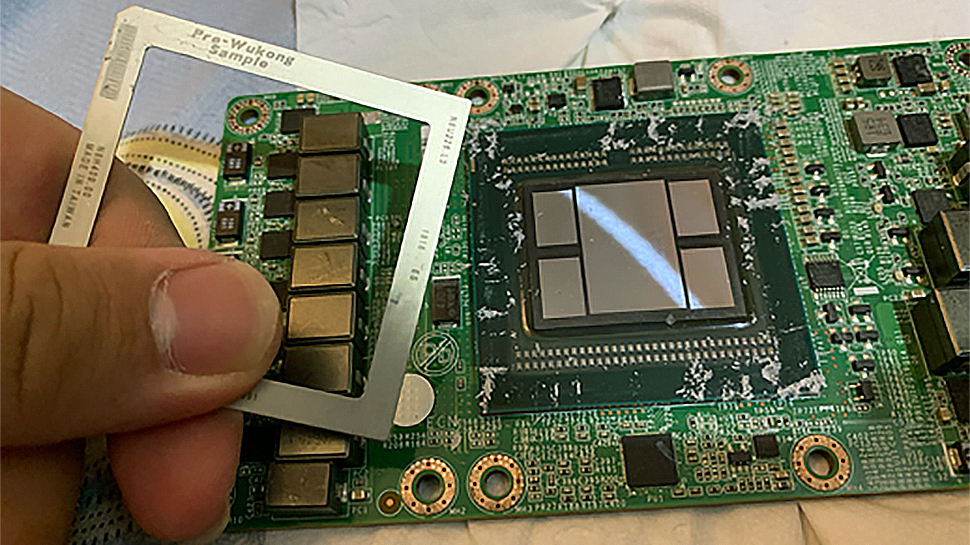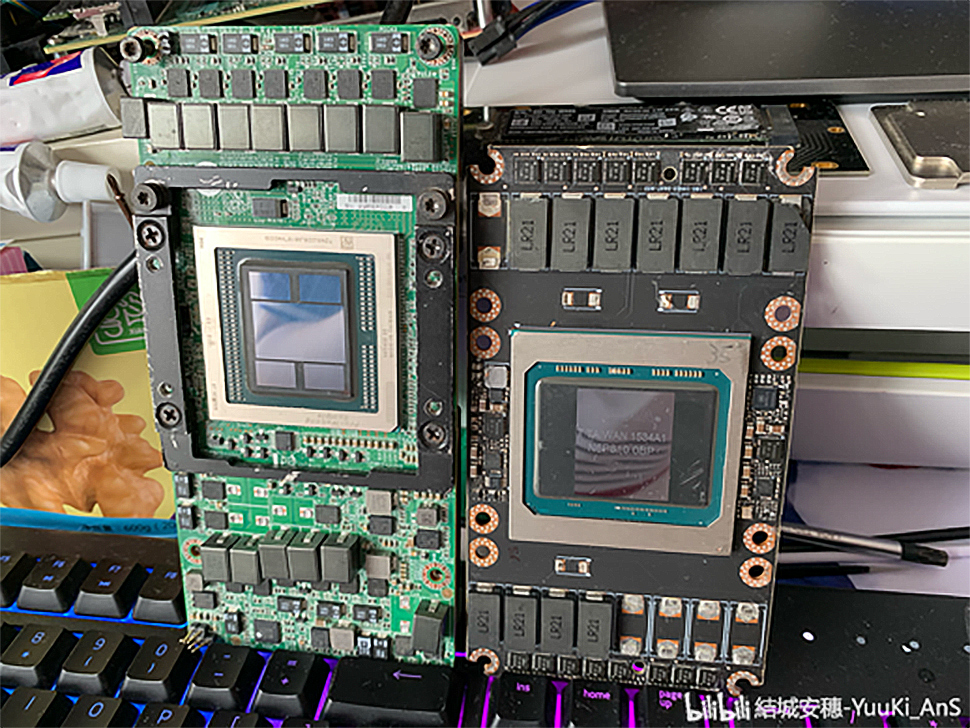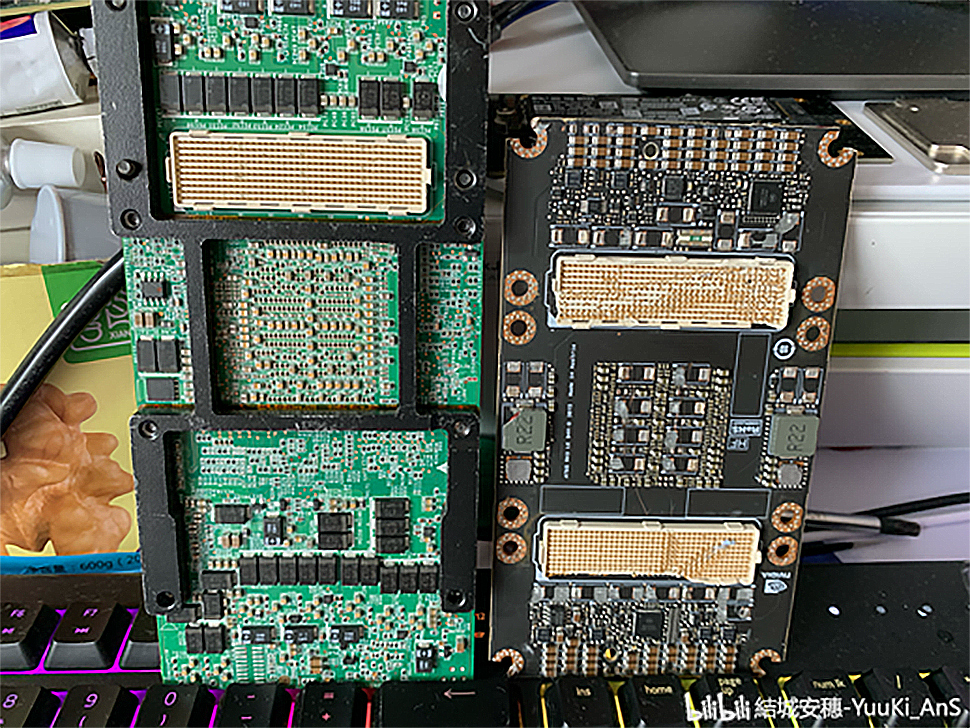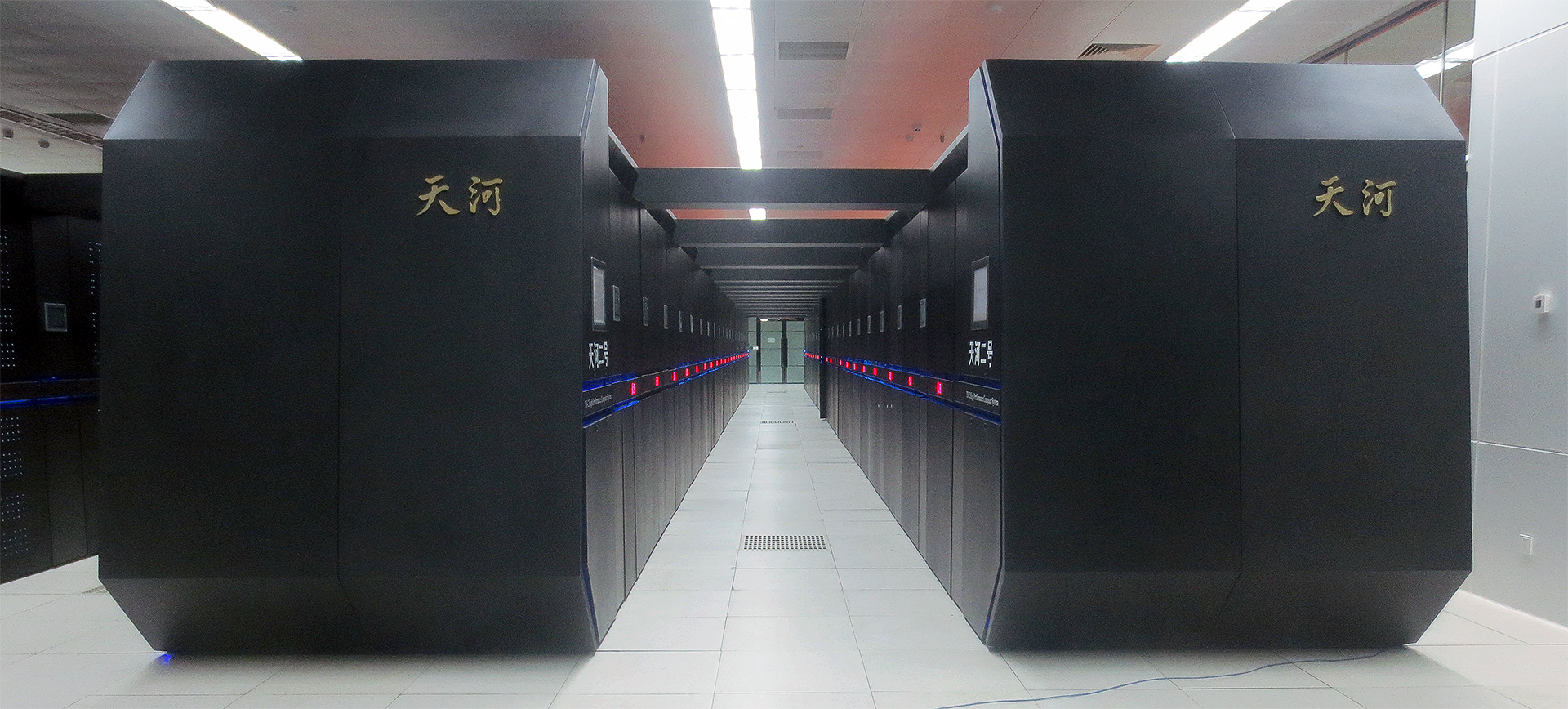Chinese Server Maker Sugon Has Its Own Radeon Instinct MI50 Compute Cards (Updated)
Sugon has something that does not exist: Radeon VII on a mezzanine card
UPDATE 10/13/20, 8:13am PT: We have contacted AMD regarding the matter and received a response. According to the company, it complies with all the export regulations and has not supplied restricted supercomputer parts — including the Radeon Instinct MI50/MI60 — to Sugon or other parties from the Entity List. AMD is not sure how Sugon might obtain its Radeon VII GPU, but it confirmed that the card demonstrated on the photo was a custom board build by Sugon or for Sugon, but not by AMD. AMD is also not assisting with technical support for the product, either.
Original Article:
Sugon was the first server maker from China to obtain Hygon’s Dhyana CPU based on a specially tailored version of AMD’s Zen microarchitecture. The company, which is also known for its supercomputers, has launched several machines based on various versions of Dhyana and Dhyana Plus processors with up to 32 cores that were available exclusively in China. As it turns out now, the same company has also gained access to AMD’s Radeon Instinct MI50 compute GPU for high-performance computing (HPC) applications, a part that is not supposed to be sold to Chinese companies (Via YuuKi_AnS/bilibili.com).
A Mezzanine Radeon Instinct MI50 ‘Vega VII’ Compute Card? From Sugon?
When AMD launched its Radeon Instinct MI50 and MI60 compute accelerators based on its 7nm Vega GPU back in late 2018, the company only introduced them in add-in-board form-factors. But as a post on a Chinese forum by YuuKi_AnS shows, there are (or at least were) mezzanine-style Radeon Instinct MI50 cards for HPC applications.

The boards in question are said to be samples of the so-called Hygon DCU that is based on the Radeon VII chip enhanced with HPC-specific instructions and made using TSMC’s first-generation 7 nm (N7) process technology. The GPU — which is marked as a ‘Pre-Wukong Sample’ — reportedly carries 16 GB of HBM2 memory, just like the Radeon Instinct MI50 in a card form-factor.

The mezzanine board has a Sugon mark on it and it looks a bit bigger when compared to Nvidia’s Tesla GV100 mezzanine card. It also has only one set of connectors.

Considering the fact that we are dealing with something that is marked as a ‘sample’, it is likely that the mezzanine board is indeed a pre-production device made in 2018 for evaluation. But the Sugon marking suggests that the card was made by Sugon (or for Sugon), a company that is currently in the U.S. Department of Commerce’s Entity List. Furthermore, this company was not supposed to get this GPU even in 2018, before it was included into the list.
Get Tom's Hardware's best news and in-depth reviews, straight to your inbox.

Tight Export Restrictions
There are various U.S. regulations and international agreements that are meant to control exports of HPC technologies to countries suspected of engaging or assisting in weapons proliferation.

The U.S. government and authorities in other countries use various metrics to determine performance and capabilities of processors, including raw compute performance in floating point operations per second (FLOPS), Adjusted Peak Performance (APP), and Composite Theoretical Performance (CTP). For example, Intel lists APP and CTP export compliance metrics for its processors on its website to make it easier for its own sales personnel as well as various government agencies to discover this information.
Earlier this year the U.S. Department of Commerce tightened restrictions on technology exports to China, Russia, and Venezuela. Specifically, it expanded the list of items that could be used to make devices sought for military end use and also removed license exceptions for civilian end-users. As a result, it got nearly impossible to sell certain chips to the said countries without a license and shipping semiconductor production equipment and technologies to companies from China, Russia, and Venezuela also requires a license.
China Wants Compute Power
Back in 2015, the Bureau of Industry and Security of the U.S. Department of Commerce denied Intel to sell processors to China’s National Supercomputer Center in Guangzhou when the latter planned to increase performance of its Tianhe-2 supercomputer to 110 PetaFLOPS as it believed that the system could be used to develop nuclear weapons.

While China has a fleet of domestic CPU designers, they cannot produce processors that would be competitive with those from market leaders in terms of performance and ease of programmability. As a result, Chinese partners (including Sugon) approached AMD and Intel in 2015 with a proposal to build highly-customized processors for the Chinese market that could be exported to the country.
Since export compliance requirements are tied to specific metrics and the U.S. DoC was not supposed to block exports of certain processors to China that met its criteria, the deal with Intel was essentially limited to adding two extra chips into a standard Xeon CPU package.
But the arrangement with AMD was much more sophisticated. Through joint ventures, AMD teamed up with its partners to build a version of its Zen 1 design specifically for China. For Hygon’s Dhyana, the companies adjusted performance, probably to meet the export control criteria, and added China-specific encryption algorithms. Because Chinese companies made substantial contributions to the design, it was possible to formally call Dhyana Chinese CPUs.
Hygon’s Dhyana and Dhyana Plus CPUs ended up being considerably slower than AMD’s own Ryzen and Ryzen Threadripper processors, but this did not stop the U.S. government from adding AMD’s joint ventures to Entity List and cut off their access to U.S. technologies, which essentially killed the whole project.
Radeon Instinct MI50, You Shouldn’t Be Here
AMD’s Radeon Instinct MI50 compute GPU provides 13.4 FP32 TFLOPS performance as well as 6.7 FP64 TFLOPS performance, which is dramatically higher when compared even to the latest AMD EPYC processors.

Therefore, it is hard to imagine that AMD would be allowed to export this processor to China in more or less mass quantities. Meanwhile, since high-end GPUs are usually not resold by distributors, chances that Sugon got its sample from a third party do not seem to be high.
We have reached out to AMD for clarification and are waiting for the response.

Anton Shilov is a contributing writer at Tom’s Hardware. Over the past couple of decades, he has covered everything from CPUs and GPUs to supercomputers and from modern process technologies and latest fab tools to high-tech industry trends.
-
nofanneeded The Gaming cards are available in millions of units world wide ... from Nvidia and AMD ...Reply
China could easily buy the gaming cards in large quantities in millions , and then take out the GPU and engineer a board for it and drivers as well. there is no way USA can stop china from doing this. -
neojack I was about to say the same thing.Reply
in the 80's the US needed titanium to build their new strategic bombers, the F117 Nighthawk
At this time, Russia was the only provider that could sell enough titanium for USA's needs.
only problem was, soviet Russia banned the US because it was a strategic ressource
solution was simple : the CIA created a lot of fake companies around the world. each ordered reasonable amounts of titanium, wich was shipped back to the US.
it was in the 80's. now it's even simpler. China can order everything they want. it's just more complicated than a regular order but it can be done.
Also, on aliexpress, i can see TONs of used Ryzen / i7 CPUs , so they have all the hardware they want, no problem -
pinoy lambingan your information is impressive <a href="https://pinoy-lambingan.su/category/pinoy-ako/">pinoy lambingan</a> check out our siteReply